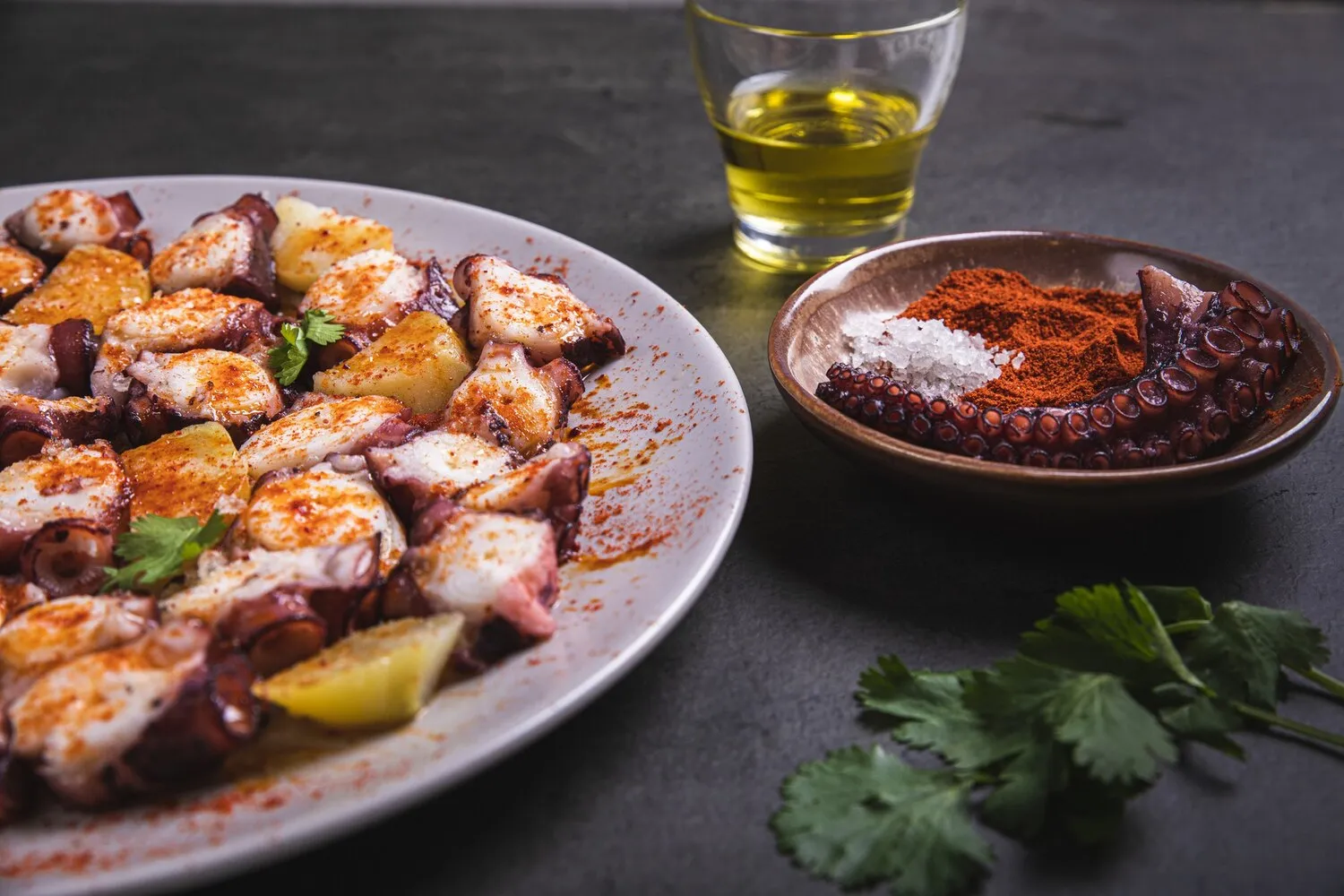
Pulpo
Several online reviews indicate that the octopus (pulpo) is a well-regarded dish at La Pequeña Taberna.
Nutrition Facts
* The % Daily Value (DV) tells you how much a nutrient in a serving of food contributes to a daily diet. 2,000 calories a day is used for general nutrition advice.
Pulpo a la Gallega, also known as Polbo á Feira, has its roots in the Galician fairs and markets of inland Galicia. Originally, it was a simple and affordable dish, perfectly suited for feeding the crowds at these gatherings. The dish's history is intrinsically linked to the region's fishing traditions and the ingenuity of using readily available ingredients.
Pulpo a la Gallega is deeply ingrained in Galician culture, representing more than just a meal. It symbolizes community, tradition, and the region's rich culinary heritage.
Fairs and Festivals
Traditionally served at fairs and festivals throughout Galicia, it is a communal dish, shared amongst friends and family, fostering a sense of togetherness.
Galician Identity
Pulpo a la Gallega is considered a symbol of Galician identity, representing the region's culinary traditions and its connection to the sea.
Preparation as Art
The preparation of Pulpo a la Gallega is often considered an art form, with experienced 'pulpeiras' (octopus cooks) meticulously preparing the octopus to achieve the perfect texture and flavor.
The dish is characterized by its simple yet impactful flavors. The tender octopus is balanced by the smoky paprika, olive oil, and the subtle heat of the pepper flakes.
The primary flavors are derived from the tender, slightly chewy octopus; the richness of the extra virgin olive oil; the smoky, sweet paprika (pimentón de la Vera); and the subtle heat of the red pepper flakes. Salt is also crucial for enhancing the overall taste profile. The dish avoids complex sauces or heavy seasonings, allowing the natural flavors of the octopus to shine.
Tenderizing the Octopus
Freezing the octopus before cooking helps to break down the fibers, resulting in a more tender texture. Defrost it completely before cooking.
Cooking Method
Cook the octopus in a copper pot if available, as it is believed to impart a unique flavor. If not, use a large pot. Do not add salt to the cooking water initially; add it after the octopus is cooked.
Achieving the Right Texture
The key to perfect pulpo is knowing when it's done. It should be tender but still have a slight bite. Overcooking will result in a rubbery texture.
Serving
Serve immediately after slicing, while still warm, on a wooden platter with a generous drizzle of olive oil and a sprinkle of paprika and coarse sea salt. Warm plates are recommended.
Explore additional Seafood/Tapas dishes and restaurants
Explore Seafood/TapasDiscover top dining spots and culinary experiences in Murcia.
Explore MurciaLearn more about the food culture, restaurant scene, and culinary heritage of Spain.
Explore Spain